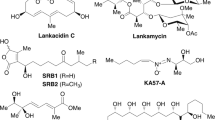Abstract.
The symbiotic N2-fixing α-proteobacterium Sinorhizobium meliloti has three replicons: a circular chromosome (3.7 Mb) and two smaller replicons, pSymA (1.4 Mb) and pSymB (1.7 Mb). Sequence analysis has revealed that an essential \( {\rm tRNA}_{{\rm CCG}}^{{\rm Arg}} \) gene is carried on pSymB, which brings into question whether pSymB should be considered a chromosome or a plasmid. Based on the criterion that essential genes define a chromosome, several species have been shown to have multiple chromosomes. Many of these species are part of the α subdivision of the Proteobacteria family. Here, additional justification is presented for designating the pSymB replicon as a chromosome. It is shown that chromosomes within a species share a more similar dinucleotide composition, or genome signature, than plasmids do with the host chromosome(s). Dinucleotide signatures were determined for each of the S. meliloti replicons, and, consistent with the suggestion that pSymB is a chromosome, it is shown that the pSymB signature more closely resembles that of the S. meliloti chromosome, while the pSymA signature is typical of other α-proteobacterial plasmids.
Similar content being viewed by others
Author information
Authors and Affiliations
Additional information
Electronic Publication
Rights and permissions
About this article
Cite this article
Wong, K., Finan, T.M. & Golding, B.G. Dinucleotide compositional analysis of Sinorhizobium meliloti using the genome signature: distinguishing chromosomes and plasmids. Funct Integr Genomics 2, 274–281 (2002). https://doi.org/10.1007/s10142-002-0068-0
Received:
Accepted:
Issue Date:
DOI: https://doi.org/10.1007/s10142-002-0068-0



